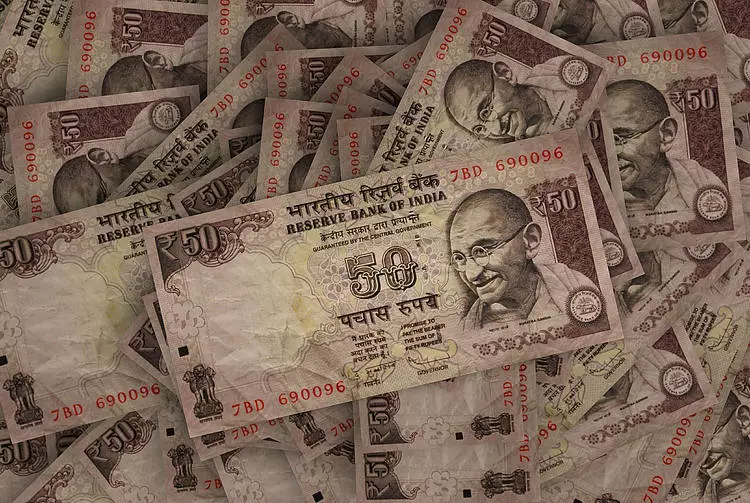The Indian Rupee (INR) remains in a tenuous position as of Wednesday’s trading session in Asia. After reaching a historical low in the previous session, the currency’s stability appears fragile, primarily due to a cocktail of disappointing economic indicators, capital outflows, and a considerably robust US Dollar (USD). With pressures from domestic economic missteps and external market forces, the Indian Rupee is undoubtedly facing a challenging landscape that investors need to navigate carefully.
Foremost among the challenges facing the INR is India’s sluggish Gross Domestic Product (GDP) growth. Recent reports underscore a significant slowdown, raising concerns about the country’s economic vitality. When GDP figures fall short of expectations, investor confidence is generally shaken, resulting in capital fleeing toward more stable currencies. This trend has been exacerbated by a prevailing atmosphere of foreign fund outflows from Indian markets, a phenomenon that puts additional strain on the local currency.
Investor sentiment is looking toward other indicators such as the HSBC India Services Purchasing Managers Index (PMI), which is slated for release later today. The PMI is a key barometer for the health of the services sector, and a surprising uptick could infuse some much-needed optimism into the currency market. Analysts project a potential improvement from October’s 58.5 to November’s anticipated 59.2, but such forecasts remain speculative in light of the existing economic undercurrents.
In response to the ongoing volatility, the Reserve Bank of India (RBI) is anticipated to step in to stabilize the currency, often through direct intervention in the foreign exchange market. By engaging in USD sales, the RBI aims to buffer the rupee against extensive depreciation. Vishnu Kant Upadhyay from Master Capital Services Ltd acknowledges that while these maneuvers may offer temporary relief, the broader economic issues will likely continue to exert downward pressure on the INR.
Moreover, the RBI also employs interest rate adjustments as a tool to manage currency stability. Current macroeconomic conditions have led many to question whether the RBI will need to raise interest rates further to combat inflation, which could reinforce the rupee’s position. However, the balancing act remains challenging; hikes in interest rates generally attract more foreign capital, yet they can simultaneously stifle domestic economic growth, particularly in sectors sensitive to borrowing costs.
The Indian Rupee is acutely sensitive to a host of external factors, including global oil prices, which can significantly impact the nation’s trade balance given that India is a major oil importer. An increase in oil prices can translate into greater import bills, thus diminishing the rupee’s value. Beyond oil, shifts in foreign investment sentiment—often determined by broader global economic conditions—also weigh heavily on the currency.
This week’s impending announcements from the US Federal Reserve are also critical. Chair Jerome Powell’s speech will be closely monitored by global investors for signals concerning future monetary policy, particularly in light of the recent increase in job openings reported by the US Bureau of Labor Statistics. Such decisions in the US markedly influence global capital flows, thus impacting emerging market currencies such as the INR.
From a technical standpoint, the USD/INR pair showcases a broad range of resistance and support levels. Supported by the 100-day Exponential Moving Average, a resurgence beyond the all-time high of 84.77 could open the door to further appreciation toward pivotal psychological barriers like 85.00. Conversely, failure to maintain levels above 84.55 may signal vulnerability, steering the pair closer to 84.22 and testing the key contention point at 84.00.
Given these dynamics, the outlook for the Indian Rupee is a blend of cautious optimism amid prevailing headwinds. A combination of effective policy interventions, improvements in fundamental economic data, and favorable global developments could foster conditions for stability. Nevertheless, the inherent volatility remains a central theme; stakeholders—ranging from policymakers to everyday investors—must keep a vigilant eye on the unfolding scenario as the rupee continues to ebb and flow amid complex, interconnected challenges.
The ongoing economic landscape reflects the broader narrative of resilience amidst adversity, but only time will tell whether the Indian Rupee can navigate its way toward a more stable future.

